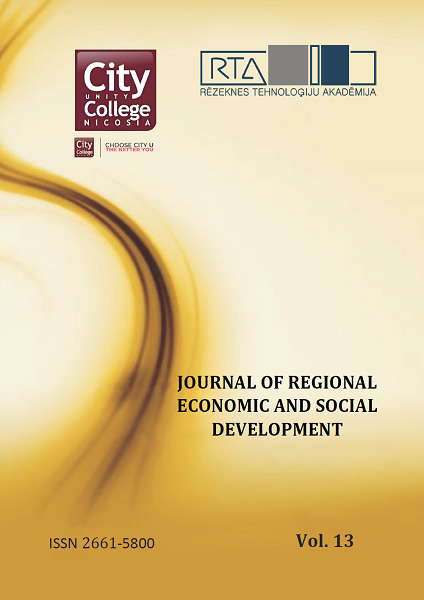SUSTAINABLE, SMART AND RESPONSIBLE NATURE PARK TOURISM
DOI:
https://doi.org/10.17770/jresd2021vol1.13.5424Keywords:
attitude, awareness, conservation, management activities, nature, protectionAbstract
The one of the largest nature parks in Latvia is Nature Park “Piejūra”. It is a very complicated area due to its valuable and sensitive coastal habitats. On the one hand, it is a territory with rich biodiversity, and on the other hand it is an area actively used by visitors and tourists due to its location close to the capital of Latvia. Therefore, implementation of sustainable nature protection, conservation and management activities is particularly important. However, as the area is widely visited, there is public resistance to the implementation of management activities. The aim of the research is to identify the level of awareness and attitude of Nature Park visitors in respect of the nature conservation, protection and management activities. To achieve the aim of the research, quantitative research methods have been used. The data allows us to conclude that the understanding of the necessary nature management and protection activities has become deeper in the society. The public understands the established restrictions and considers that there is no necessity to strengthen the restrictions, but only to promote their observance. The study confirms that the attitude towards and understanding of the nature conservation activities changes in the society if there is enough information provided and the necessity for the activities is explained.Downloads
References
Ajzen, I., Fishbein, M. (1980). Understanding Attitudes and Predicting Social Behaviour. Prentice-Hall.
Anthony, B. (2007). The dual nature of parks: attitudes of neighboring communities towards Kruger National Park, South Africa. Environmental Conservation 34(3): 236–245
Ficko, A., Bončina, A. (2019). Public attitudes toward environmental protection in the most developed countries: The Environmental Concern Kuznets Curve theory, Journal of Environmental Management, 231, 968-981.
Guzman, A., Heinen, J. T., Sah, J. P. (2020). Evaluating the Conservation Attitudes, Awareness and Knowledge of Residents towards Vieques National Wildlife Refuge, Puerto Rico. Conservation and Society, 18 (1), 13-24
Hardeman, W., Johnston, M., Johnston, M., et al. (2002). Application of the theory of planned behaviour in behaviour change interventions: A systematic review. Psychology and Health, 17, 123-158. https://doi.org/10.1080/08870440290013644a
Jeņina, A. (2015). Dabas aizsardzības un vietas attīstības interešu saskaņošana dabas parkā „Piejūra” Carnikavas novada teritorijā. Maģistra darbs.
Okaba, B. O. (2005). Petroleum Industry and the Paradox of Rural Poverty in the Niger Delta. Benin City: Ethiope Publishing
Pearson, G.R. (2016). Reasons to Conserve Nature. Trends in Ecology & Evolution 31(5)
Reķe, A. (2018). Rīgas Piejūras dabas teritoriju plānošanas problemātika un risinājumi. Maģistra darbs
Saeima of the Republic of Latvia (2010). Sustainable Development Strategy 2030 Retrieved from https://www.pkc.gov.lv/sites/default/files/inline-files/LIAS_2030_parluks_en_0.pdf
Tittensor et al. (2014). A mid-term analysis of progress toward international biodiversity targets. Science 346(6206): 241-244
Venter, O., Sanderson, E.W., Magrach, A., Allan, J.R., Beher, J., Jones, K.R., Possingham, H.P., Laurance, W.F., Wood, P., Fekete, B.M., Levy, M.A., Watson, J.E.M. (2016). Sixteen years of change in the global terrestrial human footprint and implications for biodiversity conservation, Nat. Commun., 7, 12558


